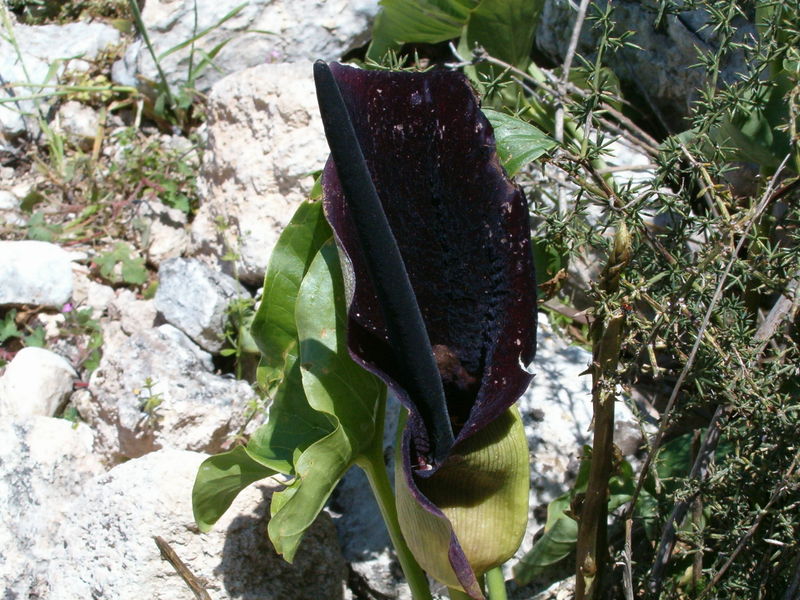From a joint international study by researchers from the Max Planck Institute and the University of Haifa, it appears that the Israelite loofah succeeds in deceiving fruit flies by imitating the smell of vibrant fruit. The flies are imprisoned in the flower for 24 hours and come out not only deceived but also hungry. For him, the flower actually gains potential pollinators

A new international study by researchers from the Max Planck Institute in Germany in collaboration with Prof. Amots Dafni from the Institute of Evolution at the University of Haifa has identified a 40-million-year-old deception mechanism of the Israelite loofah flower. According to the study, published in the prestigious journal Proceedings of the Royal Society of London: Biology, it appears that the flower imitates the smell of vibrant fruits to attract flies for the purposes of pollination, but not only does it not give them anything in return, but it "imprisons" them to 24 hours.
The relationship between insects and flowers in the kingdom of nature is clear: in order to attract the potential pollinators, the flowers must guarantee a return: usually food such as nectar or pollen (pollen). However, it turns out that even in this kingdom there are those who prefer to break the laws and deceive the insects: attract them under false pretenses and leave them without payment for the pollination services. The assumption of the researchers is that these flowers mimic in some way the means of attraction that guarantee a return, but it is not always clear what exactly this mechanism is.
The Eretz Israeli Luf is common in Israel, Lebanon and Syria. It emits a smell similar to the smell of rotten (ripe) fruit that is preferred by fruit flies as a place to lay their eggs. The loop deceives flies belonging to eight different types. Not only that, but he also imprisons the flies for 24 hours, which leaves the fly in the end cheated and hungry.
In the first part of the study, the researchers sought to identify the chemical compounds that make up the scent emitted by the flower, as it is picked up on the tentacles (antennae) of the fly. The researchers identified eight chemical substances and when they compared them to different fruits it became clear that these compounds were also found in apples, grapes, peaches, mangoes and bananas. It was also found that these compounds are also found in wine and balsamic vinegar. From further testing it became clear that the entire collection of compounds, in all the samples tested, is very similar to wine and vinegar. "It turns out that over the years the Eretz-Israeli Luf has succeeded in imitating the smell of the yeast that causes fermentation and not the smell of a particular fruit. This is how the flower, under the false pretense of being fragrant, attracts flies of many species that drop on different fruits and earns their services", said Prof. Dafni.
To prove for sure that the flies react to the false and intoxicating smell, the researchers exposed the flies' tentacles to the smell compounds and indeed saw that the flies reacted excitedly, as if they had been exposed to food.
"The eight groups of flies that are attracted to the Land of Israel evolved about 40 million years ago. The fact that the cheating mechanism operates on all these groups shows that the cheating mechanism in the Israeli countryside also developed such a long time ago," noted Prof. Dafni.

5 תגובות
What are the eight chemical substances discovered in fruit, vinegar, and wine that attract the flies???
I have a feeling that some may be in hair moisturizer (for curly hair)!!
It may sound crazy, but after using the hair cream I noticed that flies were sticking to my hair and wouldn't let go, I decided to try... a day when I didn't use the cream, no flies bothered me or my hair???
What comes out of the fly trap for 24 hours?
There should be a talkback rating system on the site
Nir you killed me
Strange the smell is of rotten meat and not of vibrant fruit
In other words - an Israeli bluff...